
Kinderdijk: The Windmill Wonderland of the Netherlands
Explore Kinderdijk, the quintessential Dutch village where historic windmills meet serene canals, offering a unique peek into the Netherlands' water management heritage.
Welcome to Kinderdijk, a UNESCO World Heritage site located in the heart of the Netherlands. Famous for its iconic windmills, Kinderdijk offers a glimpse into Dutch engineering and history. These windmills have been standing since the 18th century, playing a crucial role in water management and protecting the low-lying lands from flooding. Wander through the picturesque landscape and marvel at the 19 well-preserved windmills that line the canals. Each windmill has its own unique story and purpose. Visit the museum mills to learn more about their history and the ingenious techniques used to keep the land dry. The visitor center provides interactive exhibits and a short film to enrich your understanding of this remarkable site. Take a boat tour along the canals for a different perspective. You can also rent a bike and explore the scenic trails that wind through the area. The tranquil setting, combined with the rich history, makes Kinderdijk a must-visit destination for anyone traveling to the Netherlands.
Local tips in Kinderdijk
- Visit early in the morning to avoid crowds and enjoy the peaceful atmosphere.
- Bring a pair of binoculars for bird watching along the canals.
- Wear comfortable walking shoes as the area involves a lot of walking.
- Check the weather forecast and dress accordingly; the area can be windy and wet.
- Don't miss the multimedia exhibits at the visitor center for a comprehensive understanding of the windmills.
- Combine your visit with a trip to nearby Rotterdam for a full day of exploration.
Kinderdijk: The Windmill Wonderland of the Netherlands
Welcome to Kinderdijk, a UNESCO World Heritage site located in the heart of the Netherlands. Famous for its iconic windmills, Kinderdijk offers a glimpse into Dutch engineering and history. These windmills have been standing since the 18th century, playing a crucial role in water management and protecting the low-lying lands from flooding. Wander through the picturesque landscape and marvel at the 19 well-preserved windmills that line the canals. Each windmill has its own unique story and purpose. Visit the museum mills to learn more about their history and the ingenious techniques used to keep the land dry. The visitor center provides interactive exhibits and a short film to enrich your understanding of this remarkable site. Take a boat tour along the canals for a different perspective. You can also rent a bike and explore the scenic trails that wind through the area. The tranquil setting, combined with the rich history, makes Kinderdijk a must-visit destination for anyone traveling to the Netherlands.
When is the best time to go to Kinderdijk?
Iconic landmarks you can’t miss
Unesco Werelderfgoed Kinderdijk
Explore Kinderdijk, a UNESCO World Heritage site featuring iconic windmills and breathtaking Dutch landscapes, perfect for history lovers and nature enthusiasts.

Museummolen Blokweer
Explore the rich history of Dutch water management at Museummolen Blokweer, a UNESCO World Heritage site in Kinderdijk, showcasing traditional milling and local culture.

Museummolen Nederwaard
Explore the iconic Museummolen Nederwaard, a heritage museum that showcases the fascinating history of Dutch windmills and water management.

Nederwaard No. 1
Explore the iconic Nederwaard No. 1 windmill in Kinderdijk, a UNESCO World Heritage site showcasing the Netherlands' rich history and water management expertise.

Kinderdijk, Molenkade
Explore Kinderdijk's Ferry Terminal, the gateway to iconic Dutch windmills and a UNESCO World Heritage site, amidst stunning landscapes.
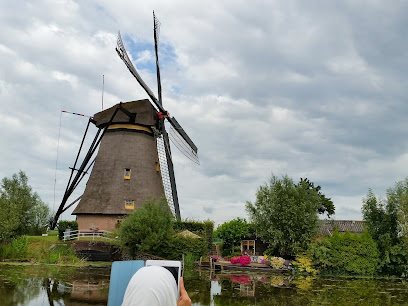
Wisboomgemaal
Discover the fascinating history of Dutch water management at Wisboomgemaal, a heritage museum in Kinderdijk showcasing iconic windmills and engineering marvels.

Nederwaard windmill No.3
Experience the heritage and beauty of Nederwaard Windmill No.3 in Kinderdijk, a UNESCO World Heritage site and a symbol of Dutch ingenuity.

Hervormde Gemeente Kinderdijk-Middelweg
Experience the tranquility of Hervormde Gemeente Kinderdijk-Middelweg, a charming Reformed church set against the backdrop of iconic Dutch windmills.

Boezems Kinderdijk
Experience the breathtaking beauty of Boezems Kinderdijk, a UNESCO World Heritage Site featuring iconic windmills and stunning natural landscapes.

Huis van Zessen
Explore the rich heritage of Alblasserdam at Huis van Zessen, a charming museum that offers engaging insights into local history and culture.

Nederwaard windmill No.8
Explore the enchanting Nederwaard Windmill No.8, a UNESCO World Heritage site in Kinderdijk, showcasing the rich history and beauty of Dutch windmills.

Overwaard windmill No.4
Explore the Overwaard Windmill in Kinderdijk, a UNESCO World Heritage site showcasing Dutch heritage and remarkable engineering.

Overwaard windmill No.5
Explore the charm of Overwaard Windmill No. 5 in Kinderdijk, a UNESCO World Heritage Site showcasing the beauty of traditional Dutch windmills.

Overwaard windmill No.7
Discover the charm and history of Overwaard Windmill No.7, a UNESCO World Heritage site in Kinderdijk, surrounded by stunning Dutch landscapes.
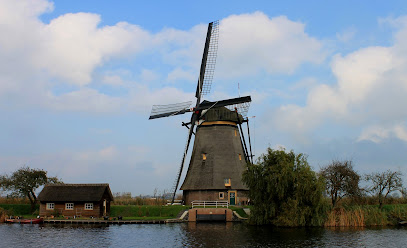
Overwaard windmill No.2
Explore Overwaard Windmill No. 2 in Kinderdijk, a UNESCO World Heritage site showcasing the beauty and engineering of traditional Dutch windmills.

Unmissable attractions to see
Shopping Center Stadshart Zoetermeer
Experience the heart of Zoetermeer at Stadshart, your ultimate shopping and dining destination with a lively atmosphere.

Kunstmuseum The Hague
Explore the stunning collections and modern masterpieces at Kunstmuseum The Hague, a cultural treasure in the heart of the city.
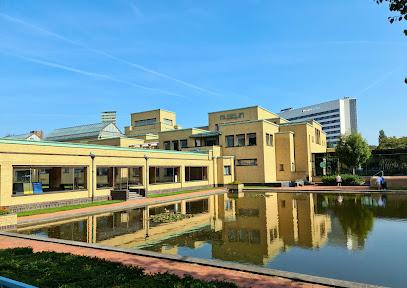
Het Park
Discover Het Park, a serene urban oasis in Rotterdam, perfect for relaxation, scenic walks, and enjoying nature's beauty amid the city's vibrancy.

Vroesenpark
Discover Vroesenpark in Rotterdam, a lush urban park perfect for relaxation, nature walks, and family fun amidst beautiful landscapes.

Museummolen Blokweer
Explore the rich heritage of the Netherlands at Museummolen Blokweer, a captivating water mill museum in the scenic Kinderdijk region.

Museummolen Nederwaard
Explore the fascinating history of water management and windmills at Museummolen Nederwaard, a UNESCO World Heritage site in Kinderdijk.

Delft University of Technology (TU Delft)
Explore the innovative spirit of Delft University of Technology, where technology meets tradition in the heart of the Netherlands.

Stadsbrouwerij De Pelgrim
Experience the vibrant flavors of Rotterdam at Stadsbrouwerij De Pelgrim, a celebrated brewpub with locally crafted beers and hearty Dutch cuisine.

Kralingen Lake
Explore the tranquil beauty of Kralingen Lake in Rotterdam, a perfect blend of nature and recreation for every traveler.
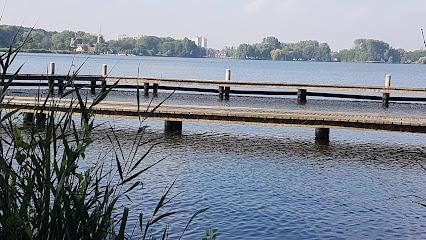
the Keringhuis, Public Water Center
Experience the innovative Dutch water management at the Keringhuis in Hook of Holland, where education meets nature in a stunning setting.
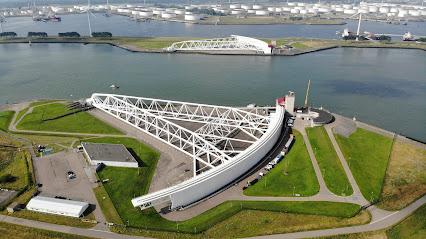
Slijterij en Bierwinkel Den Gouwen Aar
Explore Gouda's finest selection of craft beers, wines, and liquors at Slijterij en Bierwinkel Den Gouwen Aar, the perfect destination for beverage enthusiasts.

Park Houtmansplantsoen
Experience the tranquility of Park Houtmansplantsoen in Gouda, where lush greenery and serene ponds create a peaceful escape from city life.

Lambert van Meerten Museum
Explore the Lambert van Meerten Museum in Delft for a captivating glimpse into Dutch art and history amidst stunning architecture.

Statue of Ary Scheffer
Discover the Statue of Ary Scheffer, a stunning tribute to art and culture in Dordrecht's Historical City Center.

Temporary House of Representatives of the States General
Discover Dutch democracy at the Temporary House of Representatives in The Hague, a blend of history, culture, and stunning architecture.

Essential places to dine
Paviljoen Struis
Experience delightful Dutch cuisine at Paviljoen Struis in Ridderkerk – where flavor meets hospitality in a charming setting.

Le Barrage
Discover Le Barrage in Alblasserdam: A premium dining destination blending exquisite cuisine with stunning waterfront views.

Hotel - Grand Café Het Wapen van Alblasserdam
Discover delightful dining and cozy accommodations at Grand Café Het Wapen van Alblasserdam – your perfect retreat in the heart of Alblasserdam.

Partycentrum De Klok
Discover the charm of Kinderdijk at Partycentrum De Klok - where delightful dining meets vibrant events and scenic bicycle adventures.

Restaurant De Witte Brug
Discover the culinary treasures of Restaurant De Witte Brug in Lekkerkerk – where local flavors meet warm hospitality.

Restaurant Zoutsteen
Experience exquisite dining at Restaurant Zoutsteen, where local flavors meet culinary artistry in Krimpen aan den IJssel.

Restaurant Pegasus
Discover delicious Dutch cuisine with stunning waterfront views at Restaurant Pegasus in Ridderkerk – perfect for every food lover!

Restaurant De Wachter
Discover the art of fine dining at Restaurant De Wachter in Alblasserdam, where exquisite cuisine meets elegant ambiance.
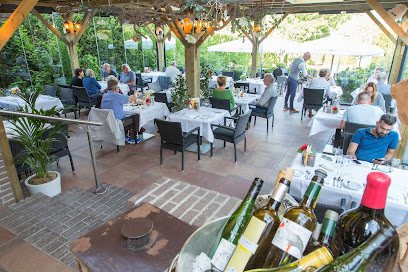
De Nar
Experience culinary excellence at De Nar in Lekkerkerk – a premier restaurant known for its delectable meat and seafood dishes.
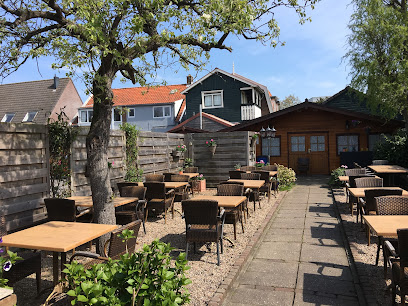
De Oude Haven
Experience exquisite dining at De Oude Haven in Ridderkerk, where local flavors meet stunning waterfront views for an unforgettable culinary journey.

Restaurant KITA
Experience the rich flavors and welcoming ambiance at Restaurant KITA in Hendrik-Ido-Ambacht – a true culinary haven.

Margaret's Corner
Experience delightful fast food at Margaret's Corner in Alblasserdam – perfect for quick meals while exploring this charming Dutch town.

Délifrance
Savor authentic French cuisine at Délifrance in Alblasserdam - where every dish tells a story.

La Piazza
Experience exquisite dining at La Piazza in Alblasserdam - where authentic flavors meet charming ambiance.

Sfinx
Experience the culinary delights of Sfinx in Lekkerkerk—where every meal is crafted with passion and fresh local ingredients.

Markets, malls and hidden boutiques
Bakkerij Ons dagelijks brood
Discover the heart of Dutch baking at Bakkerij Ons Dagelijks Brood in Kinderdijk, where flavors and tradition unite in every bite.

Biokaas Kinderdijk
Experience the art of cheese-making at Biokaas Kinderdijk, where tradition meets sustainability in every delicious bite.

Visitor Center
Discover the essence of Dutch heritage at the Kinderdijk Visitor Center, where iconic windmills and local culture come to life.

Wisboomgemaal
Discover the charm of Wisboomgemaal, a heritage museum in Kinderdijk that unveils the secrets of Dutch water management and windmill history.

ES kadoshop
Explore ES kadoshop in Kinderdijk for unique souvenirs and local crafts that capture the essence of Dutch culture and charm.

LaDunya Mode
Discover unique fashion finds at LaDunya Mode, a premier gift shop in Krimpen aan de Lek, offering clothing, accessories, and jewelry for every taste.

Essential bars & hidden hideouts
Paddy Murphy's Irish Pub
Discover the vibrant atmosphere of Paddy Murphy's Irish Pub, where authentic Irish hospitality meets the heart of Rotterdam's nightlife.

Hollywood Event Center
Discover the ultimate leisure experience at Hollywood Event Center, your go-to destination for dining, entertainment, and sports in Rotterdam.

Paviljoen Struis
Experience exceptional Dutch cuisine at Paviljoen Struis in Ridderkerk, where every meal is a celebration of flavor and hospitality.

Melief Bender
Experience the vibrant nightlife at Melief Bender, a premier bar in Rotterdam offering an extensive drink selection and lively atmosphere.

In de Klander Muelen
Discover the charm of Dutch cuisine at In de Klander Muelen, where tradition meets modern dining in the heart of Dordrecht.

BRUT Food & Wine Bar
Experience the authentic Mediterranean dining at BRUT Food & Wine Bar, a culinary haven in the heart of Dordrecht, perfect for wine lovers and food enthusiasts.

Partycentrum De Klok
Discover the perfect blend of dining, events, and outdoor adventure at Partycentrum De Klok in Kinderdijk, where vibrant experiences await.

Restaurant Pegasus
Discover the culinary delights of Restaurant Pegasus in Ridderkerk, where local charm meets international cuisine in a cozy setting.

Olive Garden Kitchen & Bar
Delight in Italian-American cuisine at Olive Garden Kitchen & Bar, where every meal is crafted with passion and quality ingredients.

The Hideaway Café
Experience the vibrant atmosphere of The Hideaway Café in Dordrecht, where live music, delicious food, and great company await.

Tapperij Tijdloos B.V.
Discover Tapperij Tijdloos B.V. in Papendrecht, where cozy atmosphere meets a diverse drink selection for an unforgettable night out.
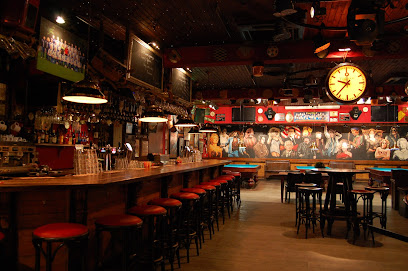
Rood, wit & rosé Wijnwinkel & wine bar
Discover exquisite wines and a cozy atmosphere at Rood, wit & rosé, Dordrecht's premier wine bar for enthusiasts and casual drinkers alike.

La Piazza
Discover La Piazza, Alblasserdam's charming bar and restaurant, offering a delightful blend of culinary experiences in a cozy setting.
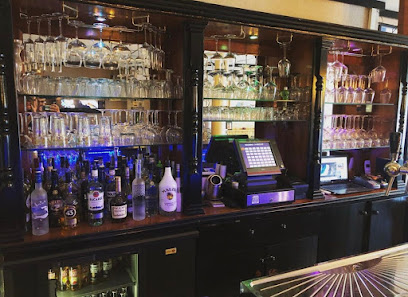
Visitor Center
Explore the rich heritage of Kinderdijk at the Visitor Center, home to interactive exhibits, a cozy café, and a delightful souvenir shop.

Forty One
Discover the cozy charm of Forty One, a wine bar in Ridderkerk offering a diverse selection to delight every palate and create lasting memories.
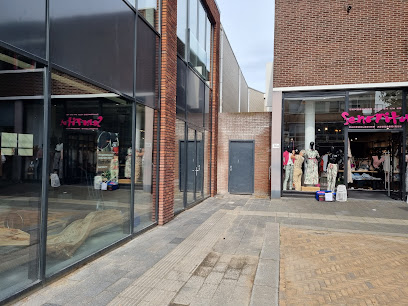
Local Phrases about Kinderdijk
-
- HelloHallo
[HAH-loh] - GoodbyeTot ziens
[tot zeens] - YesJa
[yah] - NoNee
[nay] - Please/You're welcomeAlsjeblieft
[als-yuh-BLEEFT] - Thank youDank je wel
[dahnk yuh vell] - Excuse me/SorrySorry
[SOR-ee] - How are you?Hoe gaat het met je?
[hoo gat het met yuh] - Fine. And you?Goed. En met jou?
[goot. en met yow] - Do you speak English?Spreek je Engels?
[sprake yuh ENG-els] - I don't understandIk begrijp het niet
[ik buh-GRAIP het neet]
- HelloHallo
-
- I'd like to see the menu, pleaseIk wil graag de menukaart zien, alsjeblieft
[ik vil hrahg duh muh-NU-kart zeen, als-yuh-BLEEFT] - I don't eat meatIk eet geen vlees
[ik ayt khain vlays] - Cheers!Proost!
[prohst] - I would like to pay, pleaseIk wil graag betalen, alsjeblieft
[ik vil hrahg buh-TAH-lun, als-yuh-BLEEFT]
- I'd like to see the menu, pleaseIk wil graag de menukaart zien, alsjeblieft
-
- Help!Help!
[help] - Go away!Ga weg!
[gah vekh] - Call the Police!Bel de politie!
[bel duh puh-LEE-see] - Call a doctor!Bel een dokter!
[bel ayn DOHK-tur] - I'm lostIk ben verdwaald
[ik bun fur-DWAHLD] - I'm illIk ben ziek
[ik bun zik]
- Help!Help!
-
- I'd like to buy...Ik wil graag kopen...
[ik vil hrahg KO-pun] - I'm just lookingIk ben alleen aan het kijken
[ik bun AHL-un ahn hut KEEK-un] - How much is it?Hoeveel kost het?
[hoo-vayl kost het] - That's too expensiveDat is te duur
[dat is tuh doo-ur] - Can you lower the price?Kunt u de prijs verlagen?
[kunt oo duh prays vur-LAH-gun]
- I'd like to buy...Ik wil graag kopen...
-
- What time is it?Hoe laat is het?
[hoo laht is hut] - It's one o'clockHet is een uur
[hut is ayn ur] - Half past (10)Half elf
[hahlf elf] - MorningOchtend
[OCH-tuhnt] - AfternoonMiddag
[MID-ahkh] - EveningAvond
[AH-vond] - YesterdayGisteren
[GIH-stuh-run] - TodayVandaag
[VAN-dahkh] - TomorrowMorgen
[MOR-khun] - 1Een
[ayn] - 2Twee
[tway] - 3Drie
[dree] - 4Vier
[veer] - 5Vijf
[vayf] - 6Zes
[zehs] - 7Zeven
[zay-ven] - 8Acht
[ahkh-t] - 9Negen
[NAY-khun] - 10Tien
[teen]
- What time is it?Hoe laat is het?
-
- Where's a/the...?Waar is een/de...?
[vahr is ayn/de] - What's the address?Wat is het adres?
[vut is hut AH-dres] - Can you show me (on the map)?Kunt u mij dat laten zien (op de kaart)?
[kunt oo may dat LAH-tun zeen (op duh kaart)] - When's the next (bus)?Wanneer is de volgende (bus)?
[VAH-nur is duh vul-HUN-duh (bus)] - A ticket (to ....)Een kaartje (naar ....)
[ayn kahrt-yuh (nar)]
- Where's a/the...?Waar is een/de...?
History of Kinderdijk
-
Kinderdijk, located in the province of South Holland in the Netherlands, emerged during the late Middle Ages. The name 'Kinderdijk' translates to 'Children's Dike,' which is derived from a legend that dates back to the Saint Elizabeth flood of 1421. According to the legend, after the devastating flood, a cradle with a cat and a baby was found floating in the water, giving the village its distinctive name. The area was originally a peat bog, which required significant drainage to make the land arable and habitable.
-
To address the constant threat of flooding, 19 windmills were constructed in Kinderdijk in the mid-18th century, between 1738 and 1740. These windmills were part of a larger water management system designed to drain excess water from the polders and pump it into the nearby rivers. Each windmill is a marvel of engineering, built to withstand the harsh weather conditions of the Dutch Lowlands. They have been meticulously maintained and many are still in working condition today, serving as a testament to the ingenuity of Dutch hydraulic engineering.
-
The Saint Elizabeth flood was a catastrophic event that struck the Netherlands on November 19, 1421. It resulted in the breaching of several dikes, leading to widespread flooding and the loss of thousands of lives. The flood significantly altered the landscape of the region, submerging entire villages and transforming the way the Dutch approached water management. The legend associated with Kinderdijk—of the cradle with a baby and a cat—stems from this tragic event and highlights the area's historical connection to water.
-
In recognition of its historical and cultural significance, Kinderdijk was designated a UNESCO World Heritage Site in 1997. This designation underscores the importance of the windmills and the innovative water management systems that have protected the region for centuries. Today, Kinderdijk is not only a symbol of Dutch resilience and engineering prowess but also a popular tourist destination, drawing visitors from around the world to marvel at its iconic windmills and learn about the history of Dutch water management.
-
Kinderdijk holds a special place in Dutch culture and identity. The windmills are emblematic of the Netherlands' enduring battle against water and are celebrated in art, literature, and folklore. Preservation efforts are ongoing to maintain the windmills and the surrounding landscape. These efforts include regular maintenance, educational programs, and sustainable tourism practices aimed at protecting this unique heritage site for future generations. The local community plays a crucial role in these preservation activities, ensuring that Kinderdijk remains a living, breathing part of Dutch history.
Kinderdijk Essentials
-
Kinderdijk is located in the province of South Holland, approximately 15 kilometers east of Rotterdam. The nearest international airport is Rotterdam The Hague Airport, about a 30-minute drive away. Alternatively, you can fly into Amsterdam Schiphol Airport, which is about an hour's drive. From Rotterdam, you can take a direct waterbus (line 202) to Kinderdijk, which offers a scenic route along the river. You can also reach Kinderdijk by car via the A15 motorway, with ample parking available near the windmills.
-
Kinderdijk is best explored on foot or by bicycle, as the area is relatively small and has well-maintained paths. Bicycle rentals are available near the entrance to the windmill park. For those preferring public transport, the waterbus from Rotterdam is a convenient option, with a stop directly at Kinderdijk. Local taxis can also be used for short trips, but are generally more expensive. Ensure you check the waterbus schedule as it operates at specific times.
-
The official currency in the Netherlands is the Euro (EUR). Credit and debit cards are widely accepted in Kinderdijk, including at most restaurants, shops, and tourist attractions. However, it is advisable to carry some cash, especially for smaller purchases or in case you visit areas with limited card payment facilities. ATMs are available at nearby towns, but not directly within the Kinderdijk windmill area.
-
Kinderdijk is generally a very safe destination for tourists. However, as with any tourist spot, it is wise to take standard precautions. Keep an eye on your personal belongings, especially in crowded areas. There are no specific high-crime areas targeting tourists, but it is always best to stay vigilant. Avoid walking alone late at night in secluded areas.
-
In case of an emergency, dial 112 for immediate assistance, which is the universal emergency number in the Netherlands. The nearest police station and medical facilities are located in the nearby town of Alblasserdam, approximately 5 kilometers away. Ensure you have travel insurance that covers medical emergencies. For minor health issues, there are pharmacies in Alblasserdam where you can purchase over-the-counter medications.
-
Fashion: Do wear comfortable walking shoes and dress in layers, as the weather can be unpredictable. Avoid wearing high heels or flip-flops, as the paths can be uneven. Religion: There are no specific religious customs to be aware of in Kinderdijk, but always respect the local culture and traditions. Public Transport: Do validate your ticket when using the waterbus and be mindful of schedules. Don't be loud or disruptive. Greetings: Do greet locals with a friendly 'Hallo' or 'Goedemorgen' (Good morning). A simple nod or handshake is sufficient. Eating & Drinking: Do try the local Dutch snacks available at the visitor center. Don’t litter; always use designated trash bins.
-
To experience Kinderdijk like a local, consider visiting early in the morning or late in the afternoon to avoid the peak tourist times. Rent a bicycle to explore the wider area, including the picturesque polder landscapes. Engage with the local guides who can provide in-depth knowledge about the history and mechanics of the windmills. Don't miss the sunset views, which offer stunning photo opportunities of the windmills against the colorful sky. Lastly, visit during the off-peak seasons for a quieter and more intimate experience.
Trending Landmarks in Kinderdijk
-
Unesco Werelderfgoed Kinderdijk
-
Museummolen Blokweer
-
Museummolen Nederwaard
-
Nederwaard No. 1
-
Kinderdijk, Molenkade
-
Wisboomgemaal
-
Nederwaard windmill No.3
-
Hervormde Gemeente Kinderdijk-Middelweg
-
Boezems Kinderdijk
-
Huis van Zessen
-
Nederwaard windmill No.8
-
Overwaard windmill No.4
-
Overwaard windmill No.5
-
Overwaard windmill No.7
-
Overwaard windmill No.2
Nearby Cities to Kinderdijk
-
Things To Do in Delft
-
Things To Do in The Hague
-
Things To Do in Leiden
-
Things To Do in Utrecht
-
Things To Do in Haarlem
-
Things To Do in Amsterdam
-
Things To Do in Amersfoort
-
Things To Do in Antwerp
-
Things To Do in Eindhoven
-
Things To Do in Nijmegen
-
Things To Do in Arnhem
-
Things To Do in Mechelen
-
Things To Do in Knokke-Heist
-
Things To Do in Leuven
-
Things To Do in Ghent










